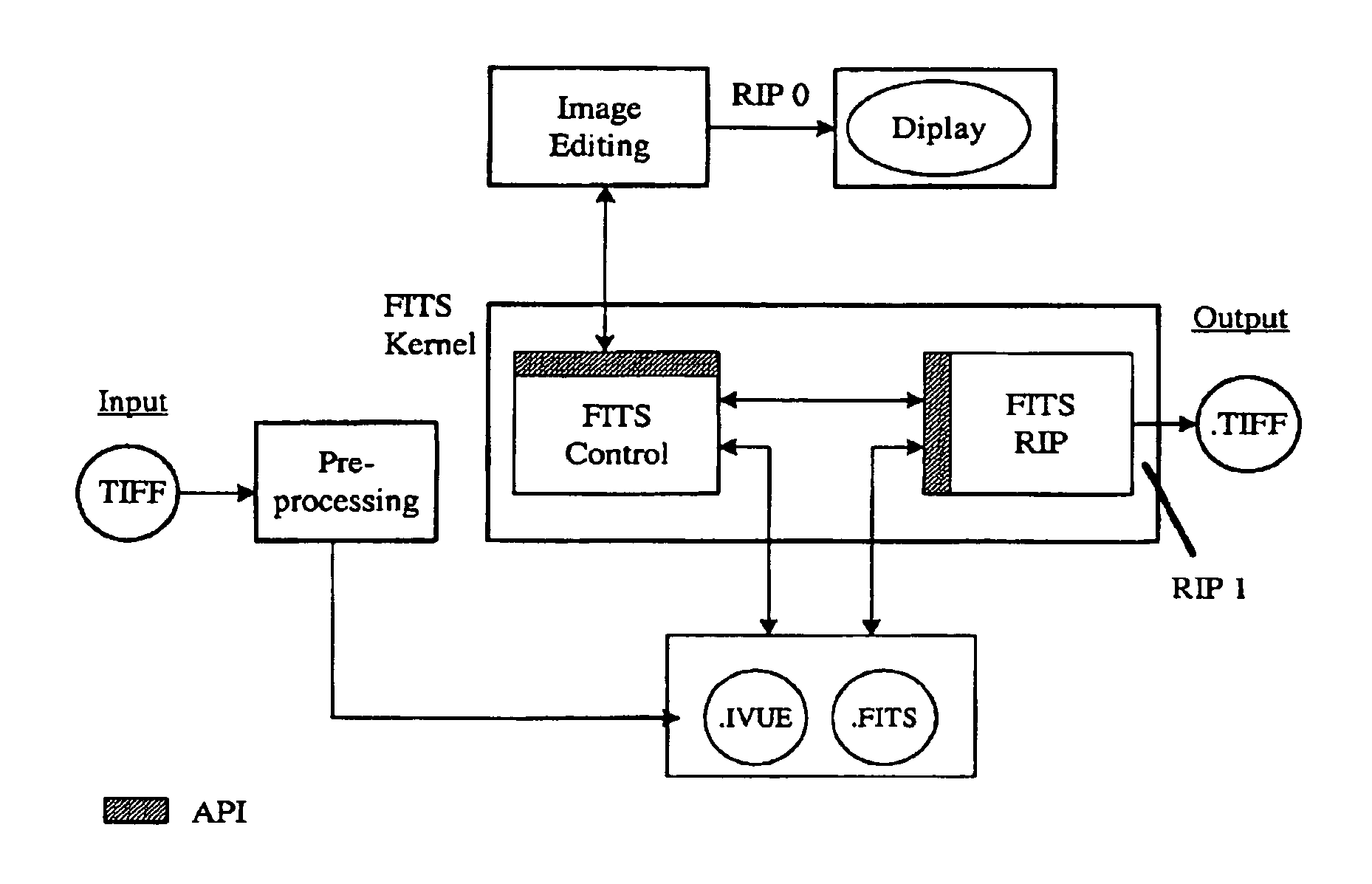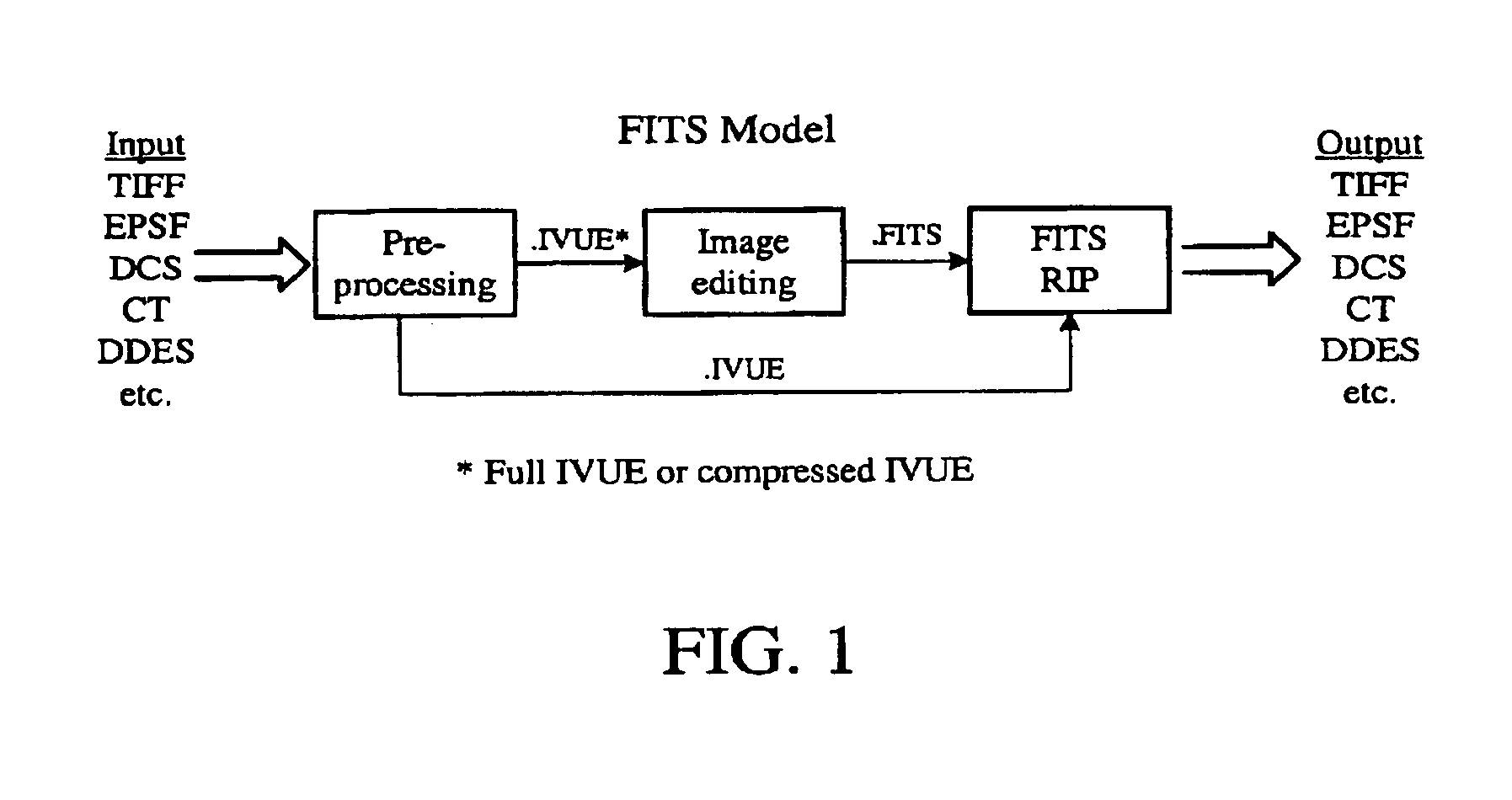Method and system for image processing
- Summary
- Abstract
- Description
- Claims
- Application Information
AI Technical Summary
Benefits of technology
Problems solved by technology
Method used
Image
Examples
examples
1) Airbrushing
[0156]This involves in making a line with a color. As this line imitates that made by an airbrush, it can be treated as a succession of colored dots created by the airbrush spray. The distribution of the color density in a airbrush dot is a Gaussian function. This means that the intensity of the color is at its greatest in the center of the dot, diminishing towards the edges as a Gauss function. In a real airbrush, the intensity depends on the pressure exerted on the trigger, which widens or otherwise changes the ink spray within the air jet. Such a pressure can be simulated in a computerized system by representing (as explained above) a dot by a circle of color with a density variation between the center and edge expressed as a Gauss function. The saturation at the center can vary between 0 and 1 (or zero and 100%).
[0157]To sum up, the line of an aerograph is a succession of colored disks, of which it is possible to modify the path (the location of the disk centers), ...
PUM
 Login to View More
Login to View More Abstract
Description
Claims
Application Information
 Login to View More
Login to View More - R&D
- Intellectual Property
- Life Sciences
- Materials
- Tech Scout
- Unparalleled Data Quality
- Higher Quality Content
- 60% Fewer Hallucinations
Browse by: Latest US Patents, China's latest patents, Technical Efficacy Thesaurus, Application Domain, Technology Topic, Popular Technical Reports.
© 2025 PatSnap. All rights reserved.Legal|Privacy policy|Modern Slavery Act Transparency Statement|Sitemap|About US| Contact US: help@patsnap.com



